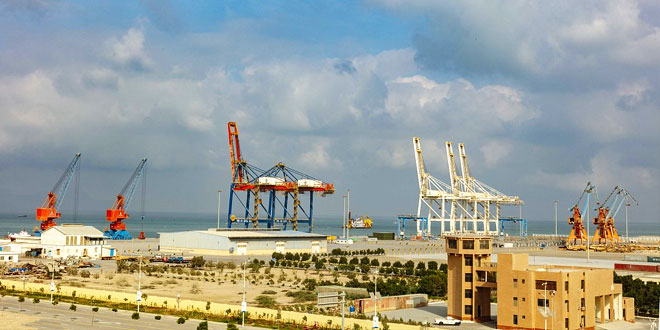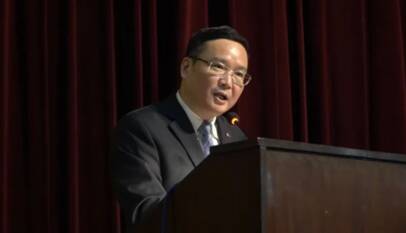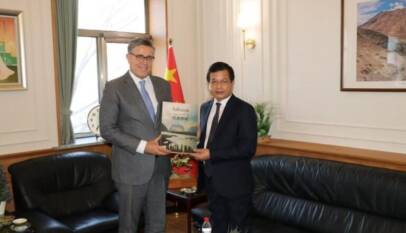Through CPEC Balochistan’s Untapped Sectors to get a boost
Balochistan has been declared backbone of CPEC, but Gwadar port is not the only resource Balochistan is blessed with. Balochistan is bestowed with 51 different metallic and non-metallic minerals, out of which 29 are comprised of gold, copper, chromites, iron and zinc. Pakistan can harness benefits exploiting these mineral resources. Balochistan produces 90 per cent cherry, grapes, and almonds, including 70% of dates also 60% of pomegranate, peach and apricot due to which it is called "the fruit basket of Pakistan". Pakistan has not yet fully utilized the blue economy of Balochistan. Coastal areas of Balochistan are rich for the shrimp, lobster and cuttlefish, however; only 10% of seafood is produced. Province is also recognized for the world's sixth-largest mangroves areas contributing annually US$ 4 billion to its export earnings. Balochistan's climate can make it a hub for Halal Meat Industry. The government also needs to refurbish and preserve historical sites of Balochistan such as an archaeological site of Mehrgarh which is called for being the oldest civilization in Pakistan. To promote domestic and foreign tourism, Pakistan has to make sea beaches in Balochistan more attractive. Some key sea beaches are Hammerhead in Gwadar, Ormara and Astola Island situated in Pasni. These underexplored sectors can lead to progress and prosperity for not only at the provincial level but at the national level. Under the China-Pakistan Economic Corridor second phase, govt is resolved to boost mineral, agriculture and fishery sector.
BALOCHISTAN, the largest province of Pakistan, (area-wise) and the smallest province (population-wise) has unique characteristics by virtue of its geo-strategic location, natural resources, Gwadar port, being the gateway to Central Asia and the Middle East. Its natural resources and Gwadar port would enhance further its significance for the global and regional players. Gwadar port, thus, would be the convergent point of China-Pakistan Economic Corridor (CPEC) and Belt & Road Initiative (BRI).
A simple query to be answered: Has Balochistan benefited from its important geo-strategic location, natural resources and Gwadar port? Ironically, the answer is unconvincing so far; its geostrategic location and natural resources have not mitigated grievances of its masses. Balochistan, today is regarded the most backward province of Pakistan, lagging far behind as for as indictors of development are concerned. However, the people of Balochistan are optimistic about CPEC, believing it as a game changer and a beacon of hope that would remove their deprivations. CPEC has an immense potential to pave the way for progress and development of Balochistan. Construction of western route of Balochistan will live up to the expectations of the indigenous people and will realize them that they are the genuine share-holders of CPEC. Currently, Balochistan’s GDP per capita is the lowest as compared to other provinces. Economic zones on western route are likely to improve GDP per capita of the province.
Enhancing Balochistan’s share from merely one percent out of 64 billion of CPEC projects would probably set the path to prosperity and development. Undoubtedly, Balochistan is bestowed upon with natural resources, extracting its natural resources under CPEC will usher progress in the province. Currently, 51 metallic and non-metallic minerals have been discovered in Balochistan, out of which 29 have to be exploited including gold, copper, chromites, iron, zinc and lead while non-metallic minerals are fluorite, magnetite, barite, coal and gabbro basalt. If proper and systematic utilization of the natural resources under CPEC is harnessed, Balochistan will probably become one of the richest regions of the world.
Balochistan is called “the fruit basket of Pakistan” sharing 90 percent national production of cherry, grapes and almonds and 60 percent of pomegranate, peach and apricot. Balochistan, on the other hand, also produces 34 percent apple and 70 percent dates of the country. Resolving power shortages, water scarcity and constructing crop specific zone under CPEC will expedite its production and aforementioned fruits under CPEC can easily be exported to the international market. Meanwhile, Baluchistan’s blue economy has not been exploited accordingly. Coastal areas of Balochistan are rich in production of shrimp, lobster and cuttlefish. Surprisingly, merely 10 percent fish of the sea are caught and 90 percent fish are still uncaught and go back into the ocean. Improving blue economy of Balochistan under CPEC will cement fisheries sector in Balochistan too.
Pakistan, on account of Balochistan’s coastal areas has world’s sixth largest mangroves areas contributing annually US$ 4 billion to its export earnings. If down-to-earth approach is CPEC, mangroves production will benefit Pakistan in general and Balochistan in particular. Livestock, under CPEC is another important sector that needs to be improved on a priory basis. Climate of Balochistan is suitable for the livestock and can become a hub of the Halal Meat Industry. Interestingly, Halal meat is fast-emerging business across the world attracting 2 billion people Muslims as well as non-Muslims.
Coastal areas of Balochistan have scintillating sceneries. Construction of Public Sector Development Programmes (PSDP) adjacent to Makran Coastal Highway under CPEC would be fruitful for economic opportunities. Sea beaches of Hammerhead in Gwadar, Ormara beaches and Astola Island situated in Pasni, are other untapped areas that need special attention to bolster blue economy of Balochistan. According to the World Travel & Tourism Council WWTC’s report, “Travel & Tourism sectors contributed US$8.3 trillion to the global economy and supported 313 million jobs in 2017. This was equal to 10.4% of the world’s GDP, and approximately 1 in 10 of all jobs”. Balochistan’s scenic beauty and historical sites have the potential to attract foreign and domestic travellers.
Mehrgarh an archaeological site of Balochistan, located near Bolan River is the oldest civilization of Pakistan. Sadly, Mehrgarh has been overlooked; its potential needs a great deal of consideration. Promoting tourism in Mehrgarh Balochistan under CPEC is the need of the hour. Hence, Pakistan would probably become a marvellous destiny for the foreign tourists. CPEC as a means to regional connectivity connects Balochistan with Afghanistan and Central Asia. Connectivity with Afghanistan will improve GDP per capita of Balochistan and can also improve Pakistan’s trade with Afghanistan and Central Asian States.
The Youth of Balochistan expects immensely from CPEC, providing ample Chinese scholarships to them will enable them to adapt themselves according to 21st century. Currently, China has become the best country for 22,000 Pakistani students, seeking overseas studies. Sadly, Balochistan has a meagre share in Chinese scholarships; enhancing Chinese scholarship to the students of Balochistan will give them a great pride to serve their province and Pakistan. Chief of Army Staff General Qamar Javed Bajwa terms the youth of Balochistan as precious asset of Pakistan and admits the value of Balochistan and says that “Pakistan is incomplete without Balochistan”. To conclude, it is not an exaggeration to say that Balochistan is the nervous system of Pakistan; a weak and fragile nervous system would be detrimental to the country. The more Balochistan progresses, the more it will guarantee Pakistan’s prosperity. Giving enough shares, Chinese scholarships, creating Special Economic Zones, universities under CPEC would most probably eliminate the sense of deprivation of Balochistan.
Chinese Ambassador highlights significance of Third Plenary Session for China-Pakistan cooperation
The Third Plenary Session of the 20th Central Committee of the Communist Party of China ha…









